
Alexander Porfyrovych Archipenko was a Ukrainian and American avant-garde artist, sculptor, and graphic artist. He was one of the first to apply the principles of Cubism to architecture, analyzing human figure into geometrical forms.

Leon Golub was an American painter. He was born in Chicago, Illinois, where he also studied, receiving his BA at the University of Chicago in 1942, and his BFA and MFA at the Art Institute of Chicago in 1949 and 1950, respectively.
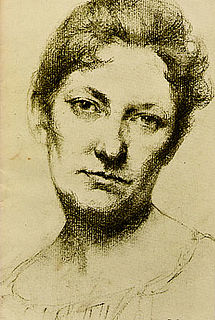
Minerva Josephine Chapman (1858–1947) was an American painter. She was known for her work in miniature portraiture, landscape, and still life.

Orval Halleck Caldwell was a Chicago-area painter. He was a prolific painter of landscapes in both oil and watercolor.
Barbara Rossi is a Chicago-based artist, one of the original Chicago Imagists, a group that in the 1960s and 1970s turned to representational art. She first exhibited with them at the Hyde Park Art Center in 1969. She is known for meticulously rendered drawings and cartoonish paintings, as well as a personal vernacular. She works primarily by making reverse paintings on plexiglass that reference lowbrow and outsider art.

Arts Club of Chicago is a private club and public exhibition space located in the Near North Side community area of Chicago in Cook County, Illinois, United States, a block east of the Magnificent Mile, that exhibits international contemporary art. It was founded in 1916, inspired by the success of the Art Institute of Chicago's handling of the Armory Show. Its founding was viewed as a statement that art had become an important component of civilized urban life. The Arts Club is said to have been pro-Modernist from its founding. The Club strove to break new ground with its shows, rather than collect the works of established artists as the Art Institute does.

Theodore Nikolai Lukits was a Romanian American portrait and landscape painter. His initial fame came from his portraits of glamorous actresses of the silent film era, but since his death, his Asian-inspired works, figures drawn from Hispanic California and pastel landscapes have received greater attention.

Albert Henry Krehbiel, was the most decorated American painter ever at the French Academy, winning the Prix De Rome, four gold medals and five cash prizes. He was born in Denmark, Iowa and taught, lived and worked for many years in Chicago. His masterpiece is the programme of eleven decorative wall and two ceiling paintings / murals for the Supreme and Appellate Court Rooms in Springfield, Illinois (1907-1911). Although educated as a realist in Paris, which is reflected in his neoclassical mural works, he is most famously known as an American Impressionist. Later in his career, Krehbiel experimented in a more modernist manner.
Robert Amft was a painter, sculptor, photographer, designer born in Chicago.
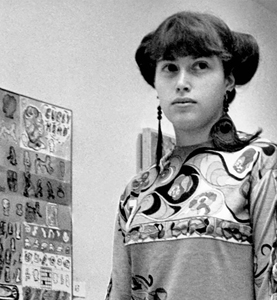
Suellen Rocca was a Chicago artist, one of the original Chicago Imagists, a group in the 1960s and 1970s who turned to representational art. She exhibited with them at the Hyde Park Art Center from 1966 through 1969. She was curator of the art collection and director of exhibitions at Elmhurst College.

Louis Frederick Grell was an American figure composition and portrait artist based in the Tree Studio resident artist colony in Chicago, Illinois, USA. He received his formal training in Europe from 1900 through 1915 and later became art professor at the Chicago Academy of Fine Arts from 1916 to 1922, and at the Art Institute of Chicago from 1922 to 1934. Grell exhibited his works throughout Europe from 1905 to 1915, in San Francisco in 1907, and in Chicago at the Art Institute 25 times from 1917 to 1941. He exhibited in New York in 1915 and 1916 and in Philadelphia and Washington DC. Primarily an allegorical and figurative composition muralist and portrait painter, his creative strokes adorn the ceilings and walls of numerous US National Historic Landmark buildings.
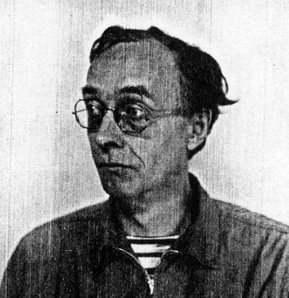
Harold Kenneth Russel Kilstrom was an American painter and printmaker, associated in the 1940s -1970s, with Abstract Expressionism. He was primarily known as Kenneth Kilstrom. He was an apprentice of Isamu Noguchi and a member of Stanley Hayter's Atelier 17. While working with Hayter in New York in 1948, he became the first artist known to have used the direct transfer of "real world" photographic imagery on to an intaglio printing plate as an element in a composition in his work "Attack on Marshall Gilbert". Kilstrom produced fifteen of these prints, two of which are held by the National Archives and the Fogg Museum at Harvard University.

James F. Walker was an American graphic artist, twice named to the 100 Best New Talent List by Art in America. Walker was particularly noted for his mixed media surrealist images, which he called "magic realism". Walker was also an influential teacher. His work has been exhibited in America, as well as in Germany and in France.
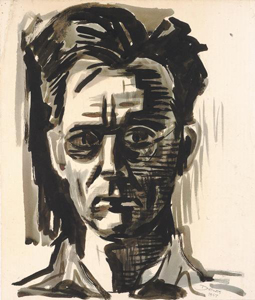
Werner Drewes (1899–1985) was a painter, printmaker, and art teacher. Considered to be one of the founding fathers of American abstraction, he was one of the first artists to introduce concepts of the Bauhaus school within the United States. His mature style encompassed both nonobjective and figurative work and the emotional content of this work was consistently more expressive than formal. Drewes was as highly regarded for his printmaking as for his painting. In his role as teacher as well as artist he was largely responsible for bringing the Bauhaus aesthetic to America.
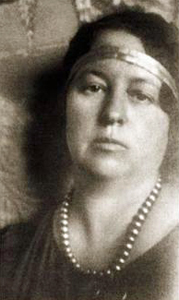
Jessie Hazel Arms Botke was an Illinois and California painter noted for her bird images and use of gold leaf highlights.
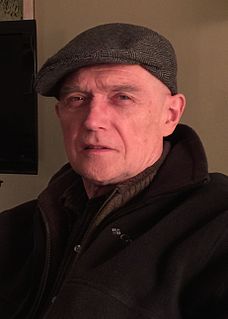
Richard Wetzel is an American artist. He is best known for his oil paintings but also has exhibited collages and sculpture. In 1969 and 1970, Wetzel exhibited with the Chicago Imagists, a grouping of Chicago artists who were ascendant in the late 1960s and early 1970s.

Wilbur G. Adam was an American painter and illustrator who divided his career between Cincinnati and Chicago. He was known for his portraiture and landscapes of western United States. In the latter part of his career he focused on Biblical illustrations.
Bernece Berkman (1911–1988), known as Bernece Berkman-Hunter after marriage, was an American painter born in Chicago, Illinois. She was inspired by what she saw in urban Chicago during the Great Depression and is best known for paintings depicting the plight of industrial workers and the poor.
James Edmund Allen was an American illustrator, printmaker, and painter. His works include a significant body of lithographs and etchings showing steelworkers, pipe workers, and other aspects of American industrial life, carefully composed compositions depicting "the daily heroism of America's industrial workers.” Allen was also a prolific illustrator who, working mostly in oil, contributed numerous illustrations to stories in popular magazines of the day. He has been misidentified in many references as James Edward Allen.
Sam Himmelfarb was a Latvian-born, American artist and commercial exhibit designer, known for his modernist-influenced paintings of everyday people and urban scenes. He also designed the Frank Lloyd Wright-inspired Samuel and Eleanor Himmelfarb Home and Studio in Winfield, Illinois, which is listed on the National Register of Historic Places. Himmelfarb studied art at the Art Students League and National Academy of Design in New York and at the Wisconsin School of Fine and Applied Arts. He initially painted in a realist style influenced by the Ashcan School, which gave way to more modernist, increasingly abstract styles. His paintings appeared in exhibitions at the Art Institute of Chicago (AIC), Terra Museum of American Art, Milwaukee Art Institute, and Arts Club of Chicago, and in circulating shows from the American Federation of Arts, among other venues. He received awards from the AIC, Wisconsin State Fair and Milwaukee Art Museum, and his work belongs to the collection of the latter, and those of the Illinois State Museum, Block Museum, and Arkansas Art Center, among others. Himmelfarb was married to the artist and educator, Eleanor Himmelfarb (1910-2009); their son, John Himmelfarb, and granddaughter, Serena, are also artists.














